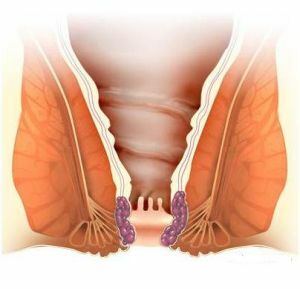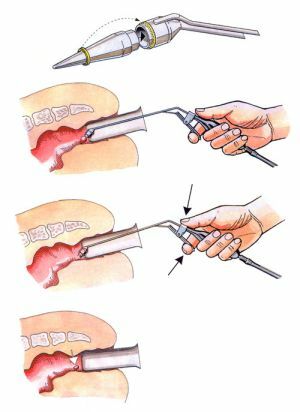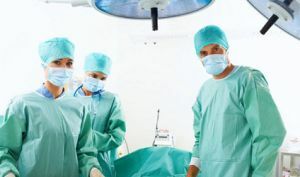 In modern medical practice, there are several effective ways to save patients from a disease such as hemorrhoids.
In modern medical practice, there are several effective ways to save patients from a disease such as hemorrhoids.
But recently the most popular is the sclerotherapy of hemorrhoids. This unique medical method is based on the introduction of a special sclerosant directly into the hemorrhoids( its veins).
As soon as this agent enters the vein, a thrombus is immediately formed. The current of blood in the vessel stops, and the walls of the vessels are glued together. So the vein gradually dies off, and the hemorrhoidal knot becomes less and less: bleeding disappears, inflammation disappears.
Hemorrhoids most often involve the appearance of several nodes. Therefore, sclerosing is carried out as many times as the nodes are detected in the patient. The break between the procedures should be at least 5-7 days.
Contents of
- Indications and contraindications for operation
- Pros and Cons of Procedure
- How is preparation for surgery performed?
- Procedure
- Possible complications
- From the practice of doctors and patients
Indications and contraindications for the operation
Sclerotherapy is prescribed as an independent treatment only in the first and second stages of hemorrhoids development. 
In more complex situations this technique is used as an auxiliary technique to relieve the patient from bleeding before a serious surgical procedure. But it should be remembered that the efficiency of manipulation depends largely on the size of the nodes.
There are contraindications for this type of intervention:
- hemorrhoids in the acute stage, when serious bleeding opens;
- presence of cracks and fistulas in the rectum and anal passage;
- thrombosis of hemorrhoids;
- combined hemorrhoids, in which the specialist can not determine the line between the external and internal nodes;
- pregnancy or the period when a woman nurses a baby;
- hypersensitivity to the components of the drugs that are used during the procedure.
Advantages and disadvantages of the
procedure The sclerotherapy of hemorrhoids has many advantages:
- this procedure is performed quite simply by and does not require much time, it is performed on an outpatient basis;
- operation is inexpensive , unlike other alternative treatment options for hemorrhoids;
- during the sclerosing of does not require anesthesia ;
- does not need to spend a lot of time in the hospital after the operation, - the recovery process lasts no more than 10 days, within a week the hemorrhoidal node must come out during the defecation process;
- procedure can be performed even for older , who have rather weak veins;
- operation allows you to get rid of several hemorrhoids in a short period of time, for one procedure a specialist can "remove" from 1 to 3 foci.
Despite numerous advantages, there are some disadvantages:
- If the doctor takes an operation in the presence of a large hemorrhoidal node, the outcome in more cases will be unsuccessful.
- After the procedure, the patient for 12 months will disappear bleeding. However, the likelihood of relapse is quite high.
Based on the above, the patient himself determines whether he will go through this procedure.
How is the preparation for the operation?
It takes a long time to prepare for the operation. The patient is recommended to empty the intestine.
This ensures that, after treatment, there is no need for defecation. Accordingly, the concentration of the sclerosing agent will not decrease, and the effectiveness of the procedure will not decrease.
It is important that the anus is carefully lubricated before the procedure. And on top the specialist applies also a special gel, which serves as an anesthetic.
Thanks to these preparatory measures, it is easy to reduce the discomfort that a patient may experience during the procedure.
The course of the operation
The operation itself passes quite quickly in several basic stages: 
- To begin with, the patient should be placed "lying on his back".The posture should be such that the legs should be bent and pinned to the stomach. In the event that the patient is unable to settle so on the strength of some circumstances, he lies on his side or rises on all fours, resting on his knees and elbows.
- The doctor carefully disinfects the anus to prevent the patient from becoming infected.
- After that, an anuscope is inserted into the anus of the patient to study the location of the hemorrhoids.
- The specialist can then proceed with the administration of a medicinal sclerosing agent.
- As soon as the procedure is over, the doctor watches the patient for 1-2 hours and then lets go home.
A couple of days after surgery, the patient may feel pain and discomfort. This is the norm in the rehabilitation process.
If nothing like this happens, the patient is obliged to come for a preventive checkup after 2 weeks. Only after this the doctor will be able to determine the further actions of the patient.
Possible complications of
Far from all the symptoms that appear after the sclerotherapy procedure is a complication. So, the pain for 2-3 days is the norm.
But side effects may occur if during the operation the doctor violated the technique of her conduct or showed some recklessness.
The most common problems are:
- In men - infertility , if the drug was inserted into the ejaculatory passages and got into the testicle.

- Bleeding is another complication that can occur for several reasons - either perforation of the artery, or a large amount( excessive) of the drug that was injected into the rectum.
- Prolapse-thrombosis appears as a consequence of treatment of large formations. Eliminated surgical or therapeutic method( depends on the situation).
- Prostatitis is another possible complication. Appears if the prostate has been punctured during procedures. Thus urination becomes painful, very frequent, sometimes bloody or even purulent.
In case of any manifestation of a complication, it is necessary to consult a doctor to eliminate this situation as quickly as possible.
From the practice of doctors and patients
Doctors say that sclerosing is a young but very demanded method for treating hemorrhoids, this modern technique is available at a price and guarantees the exclusion of relapses for a whole year. It is not complicated.
However, this is far from guaranteeing a complete cure for the disease. In this case, sclerotherapy is a salvation for elderly patients. Therefore, many specialists recommend the procedure to their customers.
Patients' reviews of sclerosing hemorrhoids are different, but more positive.
Hemorrhoids appeared unexpected to me. It was incredibly painful. I did not hesitate, and agreed to the sclerotherapy procedure that the doctor suggested to me.
The operation went very quickly. And after a few days I even had minor unpleasant sensations. I have been living for 6 months as if nothing had happened.
Igor, 52 years old
My hemorrhoids have been added to my numerous diseases under the old age. Very unpleasant thing. The doctor urged me to do sclerotherapy. I was afraid, decided at first to manage with ointments and gels. But only time has lost. I had to go back to the doctor and go to the procedure. It was not painful, very fast and quite inexpensive. Even a pensioner can afford it.
Valentina Petrovna, 78 years old
 Surgeons agree that all today's minimally invasive hemorrhoid treatment methods are not highly effective. However, this is a beautiful, painless alternative to serious surgical interventions.
Surgeons agree that all today's minimally invasive hemorrhoid treatment methods are not highly effective. However, this is a beautiful, painless alternative to serious surgical interventions.
But all patients need to carefully choose the institution where sclerotherapy will be performed.
Because the qualification, experience and professionalism of the doctor depends not only on the procedure, but also on the possible consequences.
